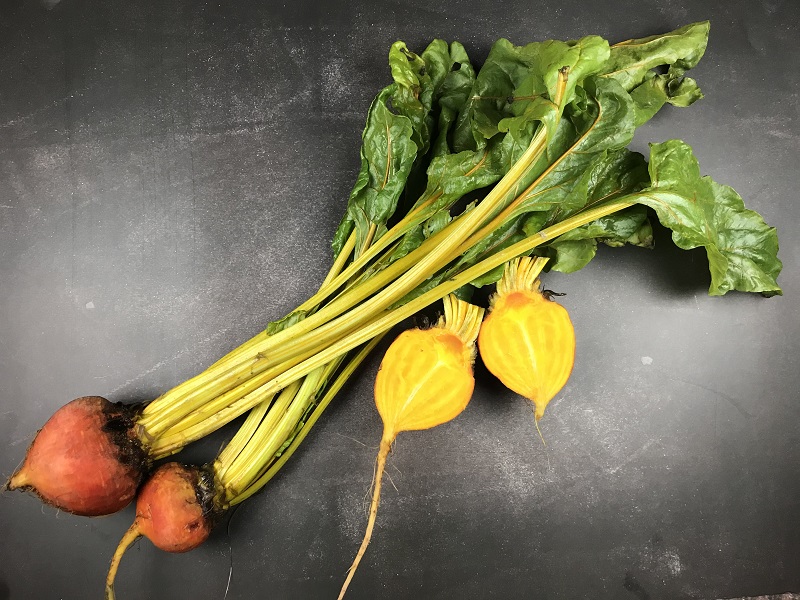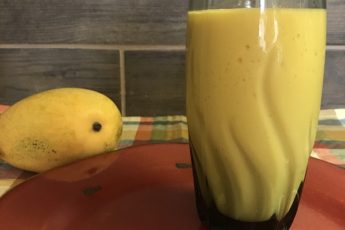Beetroot
How many of you like beetroot? How often do you cook this root vegetable at your home? After reading today’s blog, I bet you will definitely buy beetroot when you see it in the grocery aisle next time.
Beetroots come in a wide range of colors and sizes, such as red (the most popular variety we all know), white (sugar beet, used in sugar production), golden or yellow, Chioggia (striped), and baby beets. Red beet is also popularly called table beet, garden beet, dinner beet or simply “beet”. The white colored sugar beets are long conical shaped and contain high amount of sucrose, and since the 18th century has been extensively used in commercial sugar production. Sugar beet needs less water to cultivate when compared to the sugarcane and currently accounts for about 20% of world sugar production. Golden or yellow beets are grown on a very small scale for human consumption and is characteristic of a bright golden yellow interior and tastes more sweeter and less earthier than the red one. Golden beets take in the flavors better while cooking and unlike red beets, golden beets don’t stain your hands, countertops etc.
Beetroot can be eaten raw, as juice or smoothie, cooked or pickled or even used to make wine. The large beet leaves and stalks were consumed like chard, a close relative and tastes pretty much like regular spinach. Besides being used as a food, red beets are also used as a food coloring agent. Beets contain a substance called geosmin, which is responsible for that fresh soil scent in your garden following a spring rain and this is what gives the beetroot its earthy flavor.
Beets were domesticated in the ancient Middle East, primarily for their greens, and were grown by the Ancient Egyptians, Greeks and Romans. Records show that beets were found in the Hanging Gardens of Babylon (one of the wonders of the ancient world) as early as 800 BC.
Following is the long list of the health benefits beetroot has to offer you:
- Beetroot gets its vivid red color from a pigment called Betalains; betalains counter inflammation, protect the liver, and have anticancer and antioxidant activity (but can also cause beeturia (red urine) and red feces in some people who are unable to break it down).
- Beetroot is also rich in antioxidants, folic acid, potassium and fiber. It is used as a treatment for a variety of conditions, especially illnesses relating to digestion and the blood.
- It is an excellent kidney and body cleanser, high in powerful antioxidants, lowers blood pressure, lowers cholesterol, treats anemia and fatigue, and more. It decreases the risk of heart disease and helps in the prevention of various cancers, and is also good for eyes and skin.
- Golden beets due to their yellow-orange hue offer slightly different set of health benefits. Foods from this color spectrum contain high levels of vitamins and minerals such as vitamin C, vitamin A, beta-carotene, potassium, lycopene, flavonoids, and zeaxanthin.
- Beetroots have long been considered an aphrodisiac (promotes sexual well being) in many cultures including ancient Romans. Beets are a natural source of tryptophan and betaine, both substances that promote a feeling of well-being. They also contain high amounts of boron, a trace mineral which increases the level of sex hormones in the human body. In Greek mythology, Aphrodite, the goddess of love, ate beets to enhance her appeal.
However, overindulging in beets might cause low calcium levels and kidney damage, but this has not been proven in human studies.





 Hello, my name is Senthil. I am a passionate food blogger from Houston, Texas. This is my online kitchen, and I will be cooking delicious recipes for you, provide kitchen tips that I have learned over the years, and share personal stories and fond memories around food. Keep checking out for new stuff!
Hello, my name is Senthil. I am a passionate food blogger from Houston, Texas. This is my online kitchen, and I will be cooking delicious recipes for you, provide kitchen tips that I have learned over the years, and share personal stories and fond memories around food. Keep checking out for new stuff!




Leave a Comment